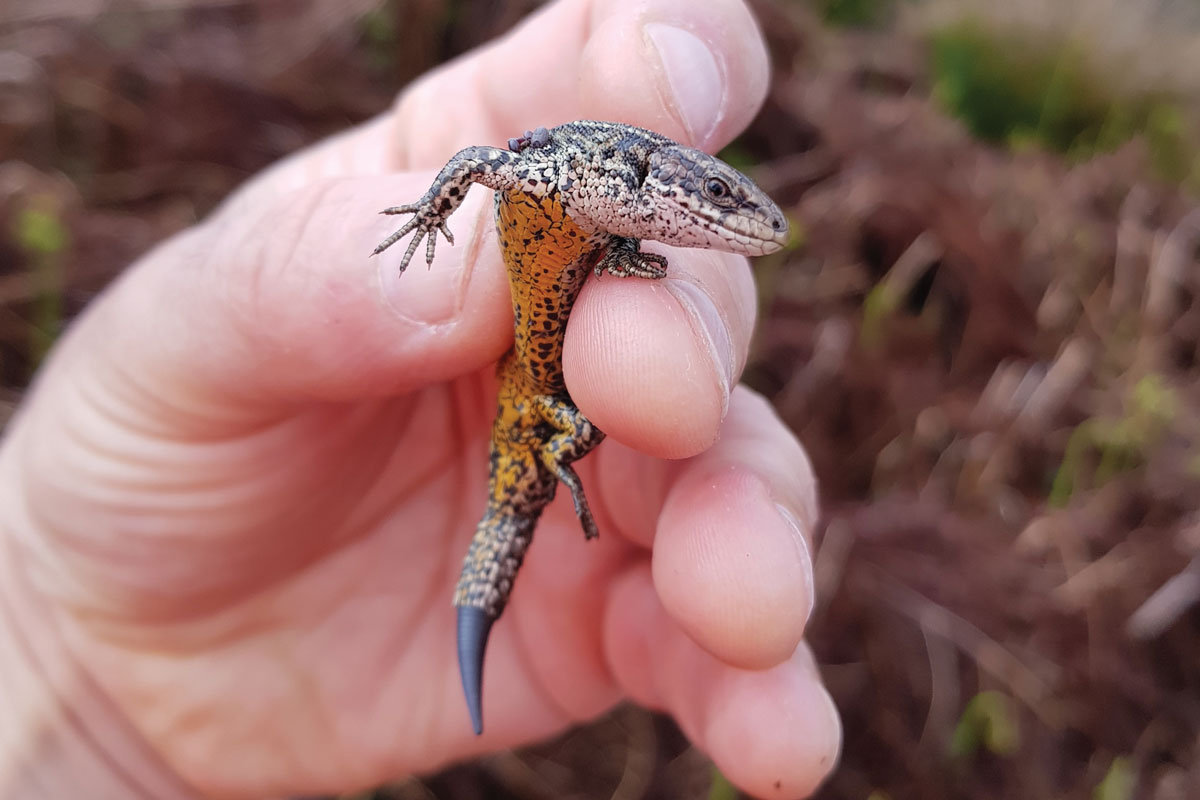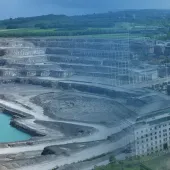Restoration and Reptiles

First published in the May 2021 issue of Quarry Management
Tarmac highlight how wildlife conservation efforts are taking quarrying back to nature
With the UK population becoming more and more environmentally conscious, responsible environmental management is becoming an ever-greater focus for companies in order to secure their ongoing ‘licence to operate’ from society.
The scale and success of the domestic quarrying industry means it has a growing opportunity to help boost the UK’s international track record on supporting habitat creation and improving biodiversity. This comes particularly at a time when government legislation equally continues to push developers and asset owners towards meeting wider targets on biodiversity net gain.
Increasingly, the best examples of environmental management across the extractives sector are happening alongside live operations. It is no longer the case that sites need to be wound down completely before restoration and management programmes are established that can help to create new habitats and deliver long-term value.
One such example is taking place at Tarmac’s adjacent Bellhouse and Stanway quarries, in Essex, where work is being carried out to protect populations of nationally important reptile species through the development of specially designed and bespoke new habitats, as part of the company’s ongoing commitment to supporting wildlife and biodiversity across its sites in the UK.
Located on the outskirts of Colchester, Stanway is a long-established sand and gravel quarry which commenced operations in 1969. Over the last 50 years it has incorporated the operations at the Bellhouse site next door and become a key supplier of aggregate raw material for construction projects across East Anglia and further afield.
However, with remaining reserves of sand and gravel becoming limited, in the middle of the last decade the company successfully secured planning permission for an extension to the north of the site to ensure continuity of production and supply. As part of the application, Tarmac set out details of a phased restoration of the wider site, predominantly for nature conservation.
Prior to work starting, the site’s conservation team identified a population of reptiles – with species including the common lizard, slow worm and grass snake – in the area that was due to be extended into. Although native UK reptiles can be found in a wide range of locations, some of these animals are now rare and all require careful management.
Around five years ago the team set to work creating and enhancing specialized, dedicated habitats as a new home for the animals as a fundamental part of the design for the restoration of the site. This involved creating almost 3ha of ideal habitat, including ponds, tussocky grassland, patches of shrub and acid grassland for the reptiles to be translocated into.
Enrique Moran Montero, restoration manager at Tarmac, explained: ‘Planning for the safe translocation of the reptiles was initially quite complex, as the three species we identified on site all have very different habitat requirements.
‘Common lizards tend to like open, sunny areas with dense cover close by and mainly feed on insects and spiders. Slow worms, however, rarely bask out in the open and can be found in tussocky grassland, heathland, and woodland edges, and particularly like to hide under logs or in compost heaps. They also feed on invertebrates, especially small slugs. Grass snakes, in contrast, are more usually associated with wetland habitats, although can be found in grasslands with a pond nearby, as they primarily feed on amphibians and fish.’
It was essential, therefore, that all of these different needs and requirements were taken into account when designing the reptiles’ new habitats. Furthermore, the habitats being created not only had to be suitable for the animals being protected, but also for the species that they feed and survive on.
Throughout the design and implementation of the project, Tarmac worked closely with Essex County Council and were supported by Henry Andrews, an ecologist with a wealth of experience of wildlife relocation. Together with Mr Andrews, the team specially selected a conservation area which was located adjacent to a large, restored wetland that would allow the grass snakes to search for food.
Enrique Moran Montero continued: ‘Several ponds were included in the reptile area to allow the grass snakes, in particular, to hunt for frogs and toads. Areas of tussocky shrub and grassland were also included to provide cover for the slow worms. In addition, acid grassland areas with south-facing mounds were incorporated to complement the habitat for common lizards. The landform creation we undertook was carefully planned to accommodate the different habitats. Poor soils were deliberately selected for the grassland areas to promote a rich diversity of species that would attract invertebrates.’
When it came to the translocation of the reptiles, Henry Andrews installed artificial reptile refuges comprising sheets of roofing felt across all of the habitats that were set to be impacted by the new quarrying operations. These refuges were left for a minimum of 14 days for reptiles to find and ‘adopt’ them.
Following this, the translocation process itself started at different times of the day – in the morning, at noon and later in the afternoon. All of the reptiles encountered were individually hand-captured and safely released within the new conservation area.
Once the area was fully cleared of the reptiles the trapping mechanisms were taken away and vegetation was carefully cropped to a height of no more than 5cm to discourage the animals from re-entering the area again.
The specialist environment created at the new site together with the translocated population of reptiles are now both carefully monitored to ensure that the habitats mature and evolve and that the animals continue to thrive in this area.
Several ‘hibernaculas’ – places where animals seek refuge over winter, such as caves and other similar shelters – have also been constructed at the site to provide a home for the reptiles during the colder winter months.
Ecologist Henry Andrews has been enthusiastic about his role in the project and the success of the conservation work that has been undertaken to date. He remarked: ‘This has been a brilliant project which Tarmac and Bellhouse Quarry’s management team have paid a great deal of attention to. The reptiles are key components of the functioning ecosystem and it’s been a very rewarding element of the wider restoration project.’
Kelven Nichols, Bellhouse Quarry manager, added: ‘We are really proud of the habitats that we have restored at the site that provide home for the local wildlife.’
These new habitats are now establishing, evolving and maturing, and further areas will be created through the site’s restoration process to allow the reptile population to expand and grow.
Enrique Moran Montero concluded: ‘We’re very pleased to have facilitated the translocation of these reptiles as part of our ongoing restoration efforts at the site. More than 18ha of UK priority habitats have been now established at Bellhouse Quarry as part of these progressive restoration works, with 60ha more to come to help the local wildlife to establish and thrive.
‘The restoration phase of a quarry provides so many opportunities to promote local fauna and flora, and we continue to pride ourselves on making the most of this land. From nature reserves to parks and wildlife learning zones for schools to use, it’s essential that we, as a business and as an industry, always strive to provide benefits for local wildlife as well as the communities that we work in.’
- Subscribe to Quarry Management, the monthly journal for the mineral products industry, to read articles before they appear on Agg-Net.com








